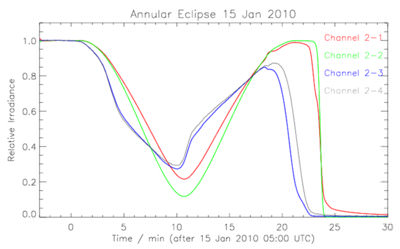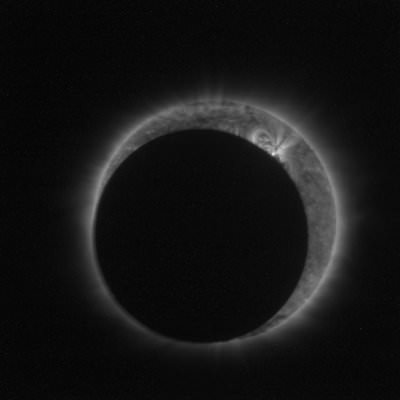[/caption]
The recently launched Proba-2 satellite was able to observe the annular solar eclipse on January 15, 2010, with stunning results. The PRoject for OnBoard Autonomy satellite was launched on November 2, 2009 and is intended to test hardware and software that might be incorporated into future ESA missions. The eclipse offered a unique chance to test out the Sun-imaging instrument, SWAP (Sun Watcher using APS detectors and imaging processing). Another radiometer instrument was also able to take measurements during the eclipse.
Proba-2 is one of the smallest satellites launched. The 0.6m by 0.6m by 0.8m satellite contains several instruments, a computer, battery, thrusters, and solar panel systems.

The eclipse was also detected by the Proba-2’s LYRA (Lyman Alpha Radiometer) instrument, the first ultraviolet radiometer in space that employs diamond detectors. LYRA will measure solar flares with an unprecedented rapid time resolution of 0.5 sec. LYRA data will soon be feeding research investigations and space weather forecasts.
Proba-2 was a secondary payload included on the launch of the SMOS mission, the Soil Moisture and Ocean Salinity Earth Explorer.
Source: ESA


Interesting to compare time resolution of the main X-ray imager on this satellite with the Solar Dynamics Observatory, due to launch in February. SDO will image the Sun every 0.1 sec vs Proba-2’s one minute interval, with SWAP (and SOHO manages images every 5-15 minutes). This time resolution and Proba-2’s ability to reorient itself away from the sun to follow flares and CMEs (something not possible with SDO) makes this a potent, cost effective solar observing platform, even though it is mainly a testbed for hardware/software. A short movie taken with the SWAP imager here: http://www.physorg.com/news183723338.html .